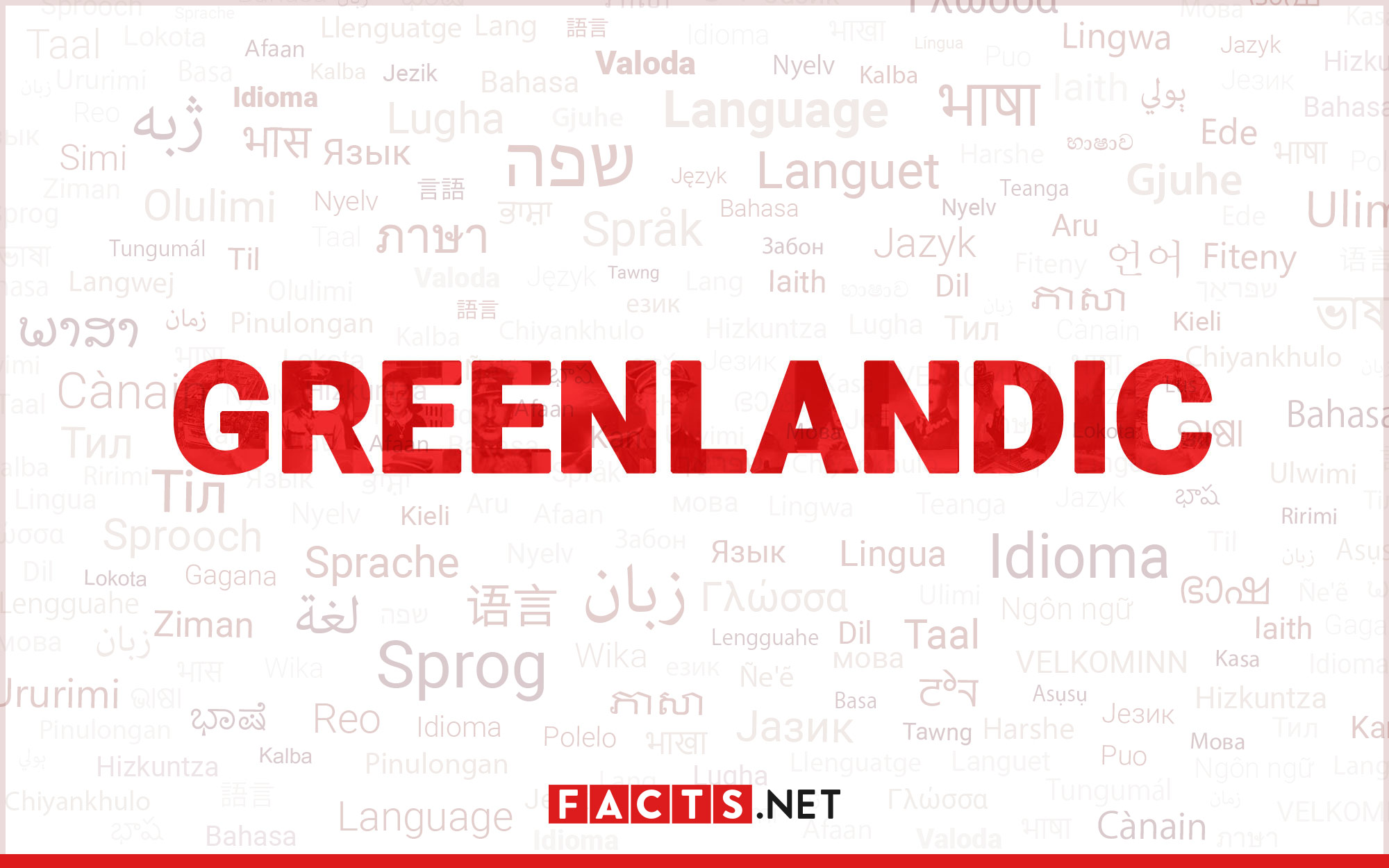
Greenlandic, the official language of Greenland, is a fascinating and unique language with a rich cultural background. In this article, we will explore some astounding facts about Greenlandic that will leave you captivated. From its origins to its grammar structure, pronunciation, and influence on the Greenlandic culture, there is so much to learn about this intriguing language. So, whether you are a language enthusiast or simply curious about Greenlandic, get ready to delve into a world of linguistic wonder and uncover the secrets behind the captivating language spoken by the people of Greenland. Let’s dive into these 16 astounding facts about Greenlandic and discover the hidden gems of this remarkable language.
Key Takeaways:
- Greenlandic, the official language of Greenland, has a unique writing system and complex grammar, making it rich in cultural terms and vital to Inuit identity.
- With multiple dialects and a growing media presence, Greenlandic has seen a revival in recent years, symbolizing the resilience of the Inuit people and their commitment to preserving their cultural heritage.
Greenlandic is the official language of Greenland.
Greenlandic, also known as Kalaallisut, is the official language of Greenland and is spoken by the majority of the population. It is also recognized as an official minority language in Denmark.
Greenlandic is an Eskimo-Aleut language.
Belonging to the Eskimo-Aleut language family, Greenlandic is closely related to other indigenous languages spoken in the Arctic regions, such as Inuktitut and Yupik.
Greenlandic has a unique writing system.
The Greenlandic writing system, also known as Qaliujaaqpait, is based on the Latin alphabet but includes some unique characters to represent specific sounds in the language.
Greenlandic has multiple dialects.
Within the Greenlandic language, there are several dialects spoken across different regions of Greenland. Some of the main dialects include Kalaallisut, Tunumiisut, and Inuktun.
Greenlandic has a complex grammar.
Greenlandic is known for its complex polypersonal agglutinative grammar, which means that words can contain numerous suffixes to indicate tense, mood, person, and number.
Greenlandic has a large number of loanwords.
Over the years, Greenlandic has borrowed words from Danish, English, and other languages to adapt to modern concepts and advancements.
Greenlandic is rich in cultural terms.
Greenlandic has a wide array of words specifically related to the unique culture, nature, and environment of Greenland, such as words related to ice, hunting, and traditional customs.
Greenlandic has an oral storytelling tradition.
Oral storytelling plays a significant role in Greenlandic culture, with stories passed down through generations to preserve history, legends, and beliefs.
Greenlandic is taught in schools.
Greenlandic is taught as a subject in schools in Greenland, ensuring the preservation and promotion of the language among younger generations.
Greenlandic has seen a revival in recent years.
With increased efforts to promote and preserve Greenlandic culture and language, there has been a resurgence in the use and appreciation of Greenlandic in various aspects of society.
Greenlandic has influenced other languages.
The unique aspects of Greenlandic, such as its polysynthetic nature and blend of Inuit and European influences, have had an impact on neighboring languages and linguistic studies.
Greenlandic has inspired artwork and literature.
The intricate language and rich cultural heritage of Greenlandic have served as inspiration for numerous artworks, literature pieces, and performances.
Greenlandic is a vital part of Inuit identity.
Greenlandic language and culture are deeply interconnected with the Inuit identity, fostering a sense of belonging and pride among the people of Greenland.
Greenlandic speakers can be found outside of Greenland.
Due to migration and cultural exchanges, Greenlandic speakers can be found in other Nordic countries and in communities around the world.
Greenlandic media is growing.
The expansion of media outlets, including television, radio, and online platforms, has contributed to the growth and visibility of Greenlandic language and content.
Greenlandic is a symbol of resilience.
The survival and continued usage of the Greenlandic language represent the resilience of the Inuit people and their commitment to preserving their cultural heritage.
Conclusion
Greenlandic is a fascinating language with a rich history and distinct cultural significance. Its unique characteristics and status as the official language of Greenland make it an important subject of study and exploration. From its complex grammar and extensive vocabulary to its close ties to Inuit heritage and traditions, Greenlandic offers a glimpse into the depths of a vibrant and resilient culture. Whether you are a linguistics enthusiast, a traveler planning a trip to Greenland, or simply curious about the world’s diverse languages, delving into the astounding facts about Greenlandic will undoubtedly broaden your understanding and appreciation of this extraordinary language.
FAQs
1. How many people speak Greenlandic?
Greenlandic is primarily spoken in Greenland, where it serves as the official language. It is estimated that around 50,000 people speak Greenlandic as their first language.
2. Is Greenlandic similar to any other language?
Greenlandic belongs to the Eskimo-Aleut language family and shares some similarities with other Inuit languages spoken in Canada and Alaska. However, it is considered a distinct language with its own set of grammar rules and vocabulary.
3. What is the writing system used for Greenlandic?
The Greenlandic writing system is based on the Latin alphabet, with some additional characters to represent unique sounds in the language. This system was introduced in the 1850s by Christian Rasmussen, a Danish missionary.
4. Are there any dialects of Greenlandic?
Yes, there are three main dialects of Greenlandic: West Greenlandic, East Greenlandic, and North Greenlandic. While these dialects have some variations in pronunciation and vocabulary, they are generally mutually intelligible.
5. Can I learn Greenlandic as a second language?
Absolutely! Learning Greenlandic as a second language is possible, although it can be challenging due to its complex grammar and unique phonetic features. However, resources such as language courses, online tutorials, and language exchange programs can help you on your language learning journey.
6. Are there any efforts to preserve the Greenlandic language?
Yes, there is a strong emphasis on preserving the Greenlandic language. The government of Greenland and various cultural organizations actively promote Greenlandic language education in schools and support initiatives to document and revitalize traditional Greenlandic dialects.
Greenlandic language's fascinating facts have piqued your interest, but there's more to explore! Delve into the world of Greenland's loyal companions, the Greenland Dogs, and their incredible abilities. Uncover a trove of intriguing facts about Greenland itself, from its stunning landscapes to its unique culture. As the largest island on Earth, Greenland holds countless secrets waiting to be discovered. Continue your journey through this captivating land by reading on and immersing yourself in its wonders.
Was this page helpful?
Our commitment to delivering trustworthy and engaging content is at the heart of what we do. Each fact on our site is contributed by real users like you, bringing a wealth of diverse insights and information. To ensure the highest standards of accuracy and reliability, our dedicated editors meticulously review each submission. This process guarantees that the facts we share are not only fascinating but also credible. Trust in our commitment to quality and authenticity as you explore and learn with us.


